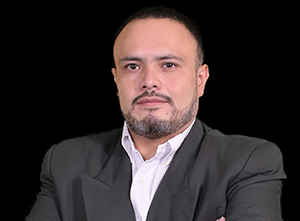The Bolivian mirage disappears

By: Hugo Marcelo Balderrama - 13/03/2023
Guest columnist.Share:
Bolivia would be an unnoticed country in the international context if it were not for our history of drug trafficking, crime, corruption and economic crises. However, as of 2006, the Bolivian streets were filled with sumptuous buildings, cars of the year and other luxuries. The international media began to talk about an "indigenous" managing an economic miracle in a small Andean nation. However, was all this true or was it just a pipe dream?
In May 2006, Evo Morales and his bandits took over the entire Bolivian gas production chain by force. As usual in these cases, the enthusiasts of the old left appeared to applaud the bravado of the cocalero. By that time the prices of hydrocarbons, therefore, of gas, had already reached unprecedented levels. In other words, Morales had appropriated an enormous source of resources. Obviously, that gave him the opportunity to squander money on useless constructions, the Olympic Village in Cochabamba, to cite one case, and to buy the consciences of businessmen, journalists and a long etcetera.
That irrational spending model began to show signs of exhaustion in 2014, a time when everyone celebrated the apparent miracle. However, the government of the "people" was not willing to stop the waste, it was necessary to continue maintaining the appearances of success. So, they had two "brilliant" ideas: a) borrow as much money as possible, and b) stimulate credit by artificially lowering interest rates.
With that large amount of money circulating in the economy, it was normal for the prices of goods to rise, including homes. But the government did not call it inflation, but "boom", partly supported by the misconceptions of the economic mainstream.
Note the idiocy of these calculations, if bread rises 20 cents they scream inflation, but if housing increases by up to 50% they call it "boom." Those publicity stunts helped him stay in power for another decade.
However, just when Arce Catacora and his lieutenant Marcelo Montenegro were boasting about their great achievements, the Bolivian economy began to collapse due to a lack of fuel and dollars.
The government tried to convince us that everything was great. Until, on Sunday, February 27, Reynaldo Yujra, the head of ASFI, with the typical attitude of a ruffian, threatened those who speak of the subject with the initiation of criminal proceedings. Luckily, nobody took Yujra seriously, the demand for dollars grew with the passing of the days and the exchange rate of 6.96, at least in the parallel market, is now a thing of the past.
Regarding the future of the country, Mauricio Ríos García, economist and investment advisor, in an article entitled: The struggle between Arce and Morales intensifies in the midst of the economic crisis in Bolivia, mentions the following:
If perhaps the public ends up losing confidence in the national currency and the ability of the Arce government to face the growing chaos, and if in addition a series of devaluations such as those of Siles Zuazo between 1982 and 1985 (the last of 40%, better known as “de-dollarization”) mark Arce's near future, as seems to be becoming more probable every day, then only his resignation and the early calling of elections would remain.
There's an old saying that goes, "You can fool everybody some of the time. You can fool some all the time. But you can't fool everyone all the time." This is precisely what happens in Bolivia. Well, the dictatorship can no longer sustain its appearance of democracy or the lie of a stable economy. Dark times are coming in Bolivia.
«The opinions published herein are the sole responsibility of its author».